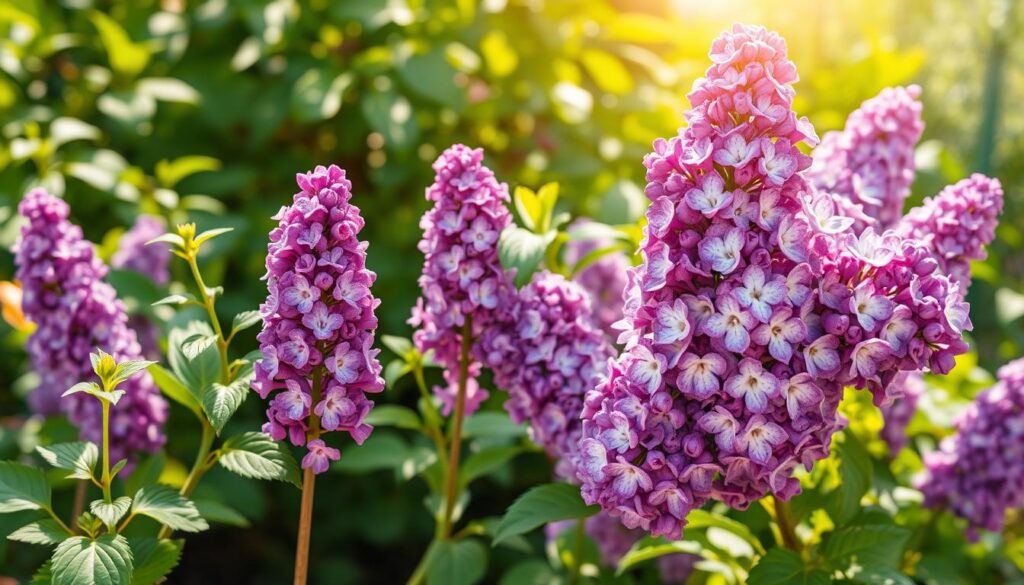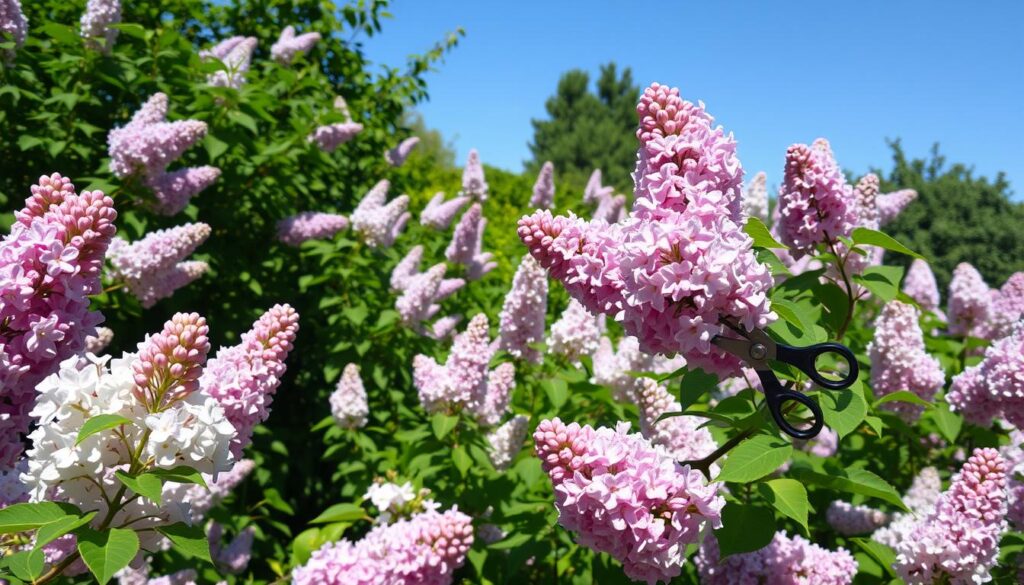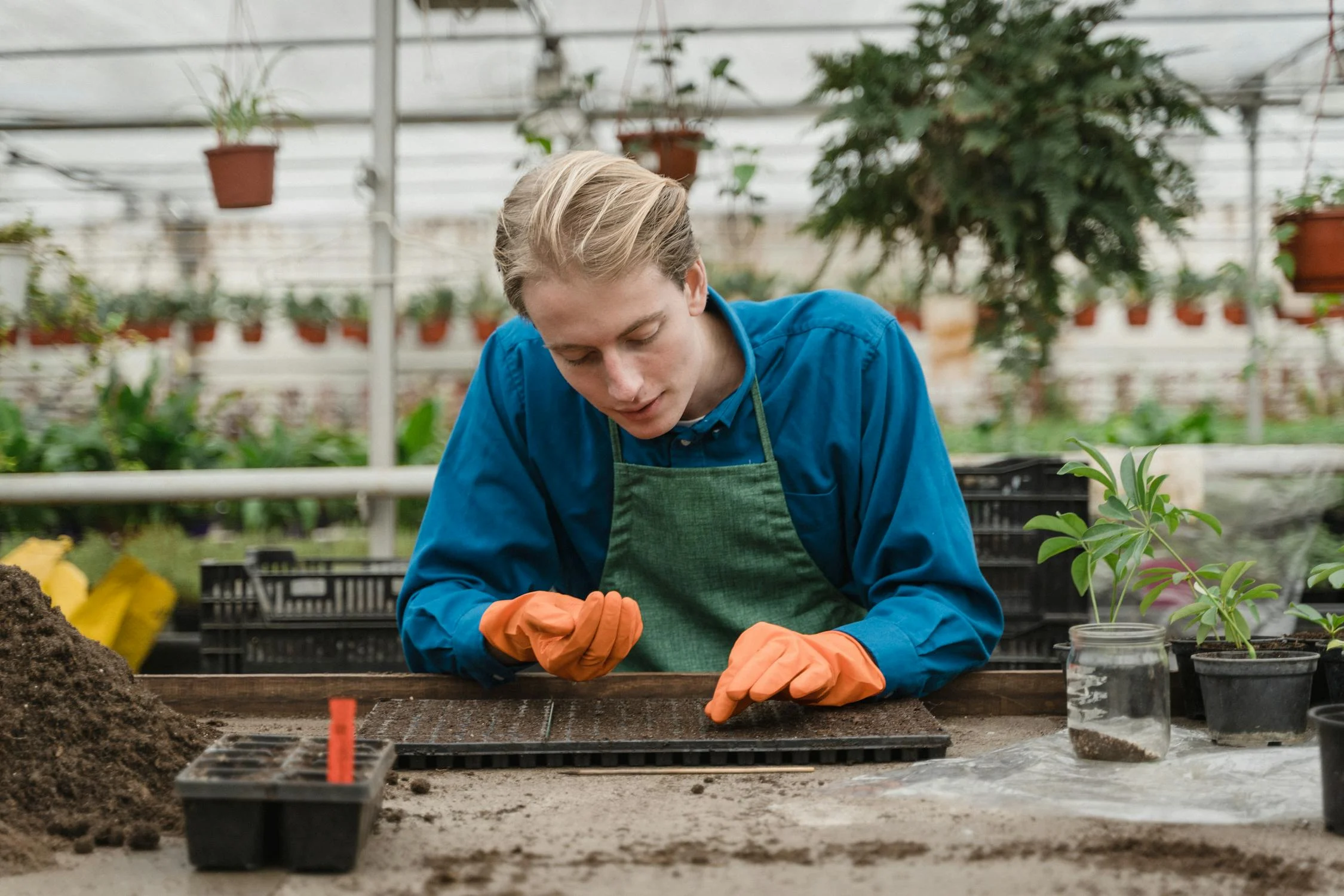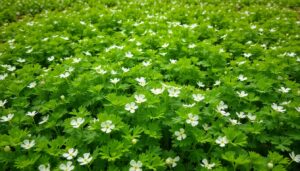How Big Are Lilacs? Ever wondered how big lilacs are and why their size is important in garden design? Lilac dimensions can surprise even experienced gardeners. They change how you plan and cultivate your landscape.
Knowing lilac size is key for creating stunning garden spaces. Lilac varieties range dramatically from compact shrubs to towering trees. This gives gardeners a lot of options for landscape planning.
Your garden’s potential can be greatly enhanced by choosing the right lilac size. From dwarf varieties perfect for small urban gardens to expansive tree lilacs that create dramatic backyard focal points, these plants offer something for every space and style.
In this comprehensive guide, we’ll explore the fascinating world of lilac dimensions. Discover how soil, sunlight, and care influence the remarkable growth patterns of these beloved flowering shrubs.
Whether you’re a seasoned gardener or a curious beginner, understanding lilac size is crucial. It helps you make informed decisions about plant selection, placement, and maintenance. Let’s dive into the surprising world of lilac dimensions!
Table of Contents
Understanding Lilac Varieties and Their Sizes
Lilac varieties come in many sizes and shapes. They range from small bushes to tall trees. Knowing the sizes helps you pick the right one for your garden.

Exploring lilac varieties is exciting for garden lovers. Different types can change your garden with their unique looks and sizes.
Common Types of Lilacs
- Common Lilac (Syringa vulgaris): Standard-sized bush
- Dwarf Lilac: Compact variety for small spaces
- Tree Lilac: Larger, more vertical growth pattern
- Preston Lilac: Hybrid variety with unique characteristics
Size Differences in Varieties
Dwarf lilacs are small, growing 4-6 feet tall. Tree lilacs can reach 25 feet. This range lets gardeners find the perfect fit for their space.
| Lilac Type | Average Height | Spread |
|---|---|---|
| Dwarf Lilac | 4-6 feet | 3-4 feet |
| Common Lilac | 8-15 feet | 6-12 feet |
| Tree Lilac | 20-25 feet | 15-20 feet |
Factors That Affect Size
Several things affect how big a lilac grows, including:
- Soil quality and nutrition
- Sunlight exposure
- Pruning techniques
- Climate and regional conditions
“Choosing the right lilac variety is like selecting the perfect piece of art for your garden landscape.”
Your garden’s unique features will guide you to the best lilac size. Think about your space, sunlight, and the look you want.
Growing Conditions That Influence Size
Learning about the factors that affect lilac tree size can change your gardening. The size and health of your lilac depend on many environmental conditions.

To grow lilacs well, you need to pay attention to a few important things. Let’s look at the main factors that affect lilac size and growth.
Soil Quality and Texture
Healthy lilac growth starts with good soil. The size of your lilac tree depends on the soil’s quality and texture. The best soil is:
- Well-draining with neutral pH (6.5-7.0)
- Rich in organic matter
- Loamy with good nutrient content
Sunlight Exposure
To measure lilacs’ potential, you need to know their sunlight needs. Lilacs do best in full sun, needing 6-8 hours of direct sunlight daily. Without enough light, they won’t grow as tall or bloom as much.
“A lilac’s vigor is a direct reflection of its sunlight exposure” – Garden Experts
Watering Needs
Watering is key to lilac tree size. Your watering plan should be:
- Consistent moisture without waterlogging
- Deep, infrequent watering
- Mulching to keep soil moist
By managing these growing conditions well, you can help your lilac grow big. This will make your landscape even more beautiful.
Average Heights of Popular Lilac Varieties
Knowing how tall lilacs can grow helps you plan your garden better. Each type of lilac has its own size, changing your garden’s look. Let’s look at the sizes of different lilacs and what makes them special.

Choosing the right lilac is key for a great garden. Lilacs come in many sizes, fitting any garden need.
Standard Lilac Heights
Standard lilacs grow tall, between 8 and 15 feet. They make great barriers and bloom beautifully in spring. They add beauty and fragrance to your garden.
- Common lilac: 10-15 feet tall
- French hybrid lilacs: 8-12 feet tall
- Typical spread: 6-10 feet wide
Dwarf Lilacs
Dwarf lilacs are great for small gardens. They grow 4 to 8 feet tall, perfect for tight spaces.
- Dwarf Korean lilac: 4-6 feet tall
- Pixie lilac: 3-5 feet tall
- Ideal for small yards and container gardens
Tree Lilacs
Tree lilacs are the tallest, reaching up to 30 feet. They can be a standout feature or a privacy screen.
“Tree lilacs transform garden spaces with their majestic presence and dramatic height.” – Garden Design Expert
- Japanese tree lilac: 20-30 feet tall
- Chinese tree lilac: 15-25 feet tall
- Exceptional for large property landscapes
Width and Spacing of Lilacs
Knowing the lilac width and dimensions is key for a great garden. Lilacs are not just pretty, but they need careful planning for the best growth and look.

When looking at lilac dimensions, gardeners must focus on spacing needs. Each lilac type has its own width, affecting where it goes in your garden.
Expected Width for Different Varieties
Lilac width varies by type. Here are the usual sizes:
- Dwarf varieties: 4-6 feet wide
- Standard lilacs: 8-12 feet wide
- Tree lilacs: Up to 15 feet wide
Planting Distances
Right spacing is vital for lilacs to grow well. The recommended planting distances help with air flow and prevent disease.
“Space is the breath of art in gardening, and for lilacs, it’s the key to vibrant, healthy growth.” – Garden Wisdom
Importance of Spacing for Growth
Spacing does more than look good. It can cut disease by up to 30%. Experts suggest:
- Plant 5-10 feet apart
- Keep 3-5 feet from other plants
- Get 6-8 hours of sunlight daily
Pro tip: Think about your garden’s climate and soil when picking the best lilac width and spacing.
Lifespan and Growth Rate of Lilacs
Lilacs are amazing plants that live long and grow steadily. Knowing how they grow helps you make a beautiful garden that will last for years.

Lilacs can live for 40 to 50 years with the right care. This makes them a lasting part of your garden.
Understanding Lilac Growth Rates
Lilacs grow slowly, about 1 to 2 feet each year when they’re young. This slow growth lets gardeners plan their gardens well.
- First 3-5 years: Most rapid growth period
- Mature stage: Slower, more controlled expansion
- Peak height: 5 to 15 feet depending on variety
Encouraging Faster Growth
To make your lilac grow faster, try these tips:
- Give them full sunlight
- Keep the soil well-drained and slightly acidic
- Fertilize them every year with balanced fertilizer
- Prune them to help them grow strong and bushy
“A well-cared-for lilac is a garden’s long-term investment,” says landscape expert Sarah Green.
Growth Performance Metrics
| Growth Characteristic | Typical Performance |
|---|---|
| Annual Growth Rate | 1-2 feet |
| Mature Height | 5-15 feet |
| Lifespan | 40-50 years |
| Flowering Clusters | Up to 20 per bush |
Patience and consistent care are the secrets to magnificent lilac growth. By understanding their natural development cycle, you can nurture these beautiful shrubs into stunning garden centerpieces.
Seasonal Changes in Lilac Size
Learning about lilacs’ changes with the seasons helps you care for them better. These beautiful flowering shrubs grow and change in size with each season. This shows how dynamic and beloved these garden plants are.
Measuring lilacs means watching their unique seasonal patterns. In spring and early summer, they grow the most. New shoots burst out, and the plant gets stronger.
Spring and Summer Growth Dynamics
In spring, your lilac bush is full of life. Winter’s stored nutrients fuel its growth. Branches grow fast, leaves unfurl, and roots expand.
- Branches elongate quickly
- Leaves become fuller and more vibrant
- Root systems expand underground
Dormant Winter Periods
As autumn comes, lilac growth slows down. By winter, it’s in complete dormancy. The plant looks still, saving energy for next year. Branches are bare, and size stays the same.
Blooming Size Transformations
When lilacs bloom, they seem to grow bigger. The many flower clusters make the bush look larger and fuller.
“Nature’s most spectacular transformation happens in the lilac’s seasonal journey” – Garden Enthusiast Magazine
Watching these changes helps you see how adaptable lilacs are all year.
Pruning Techniques to Manage Size
Managing lilac size needs smart pruning. This helps control growth and keeps plants healthy. Knowing how to prune your lilacs greatly affects their look and size.

Proper pruning lets you shape your lilacs and keep them the right size. By cutting certain branches, you can control how big your lilacs are.
Best Time for Pruning
The best time to prune lilacs is right after they finish blooming. This way, you avoid cutting off flower buds and help the plant heal fast.
- Prune within two weeks after flowering ends
- Avoid late summer or fall pruning
- Use clean, sharp pruning tools
Effective Pruning Methods
There are various pruning methods to manage lilac size and shape. Selective branch removal is crucial for controlling growth and keeping plants healthy.
| Pruning Technique | Purpose | Impact on Lilac Size |
|---|---|---|
| Thinning | Remove entire branches | Reduces overall plant height |
| Heading Back | Cut branches midway | Controls horizontal spread |
| Rejuvenation | Cut plant close to ground | Restart growth cycle |
Benefits of Proper Pruning
Regular pruning has many benefits for lilacs. It improves air circulation, encourages new growth, and makes the shrub look better.
“Pruning is an art that transforms your lilacs from unruly shrubs to garden masterpieces.” – Garden Expert
By using these pruning techniques, you can manage lilac size in your garden. This promotes healthy, vibrant plants that make your garden more beautiful.
Environmental Factors Affecting Size
Learning about the environmental factors that affect lilac growth can help you care for these beautiful shrubs. The size of lilacs depends a lot on their surroundings. So, managing the environment well is key for their growth.
Various environmental conditions can greatly impact lilac growth and health. Your lilacs will react differently to different external factors. These factors can either help or hinder their development.
Climate Considerations
Lilacs grow best in certain climate zones. They do well in:
- Moderate temperatures between 60-75°F
- Cold winters with temperatures below 45°F
- Low humidity during blooming times
Regional Growing Differences
Lilac sizes vary a lot in different places. Coastal, mountain, and inland areas each have their own growing challenges and chances.
| Region | Average Lilac Height | Growing Challenges |
|---|---|---|
| Northeast | 8-12 feet | Cold winters, shorter growing season |
| Midwest | 6-10 feet | Variable temperatures, wind exposure |
| Southern States | 4-8 feet | Heat stress, limited winter chill |
Pest and Disease Impact
Pests and diseases can really limit lilac growth. Powdery mildew and bacterial blight are big problems. They can hurt your plant’s size and health.
“Healthy plants start with proactive environmental management” – Gardening Experts
By knowing these environmental factors, you can make the best conditions for your lilacs. This will help them grow strong and look great.
The Impact of Fertilization on Size
Fertilization is key to the size and health of your lilac plant. Knowing how to fertilize right can lead to great growth and beautiful flowers.
Choosing the right fertilizer is crucial for your lilac’s size and health. Experts say to use special nutrient blends that help plants grow strong without harming them.
Choosing the Right Fertilizers
- Balanced nitrogen-phosphorus-potassium (NPK) fertilizers
- Organic compost mixtures
- Slow-release granular fertilizers
- Specialized shrub fertilizers with micronutrients
Optimal Timing for Fertilization
When you fertilize matters a lot for your lilac’s size. Experts say to fertilize in early spring and again after it flowers. This helps it grow well for next year.
| Fertilization Period | Recommended Action |
|---|---|
| Early Spring | Apply balanced slow-release fertilizer |
| After Flowering | Light nutrient boost to support root development |
Recognizing Over-Fertilization Signs
Look out for signs that you might be over-fertilizing your lilac:
- Too much leaf growth with few flowers
- Burned or discolored leaf edges
- Stunted root development
- Weak or leggy plant structure
“Proper fertilization is an art that balances nutrition and restraint.” – Garden Wisdom
Your goal is to create a nurturing environment for your lilac. This means supporting its natural growth without pushing it too hard. Remember, different lilacs need different nutrients, so do your research.
Lilacs in Urban vs. Rural Settings
Growing lilacs can be rewarding, whether in a city or countryside. The environment affects your lilac’s size and health. Knowing the challenges and benefits of each setting helps grow great lilac gardens.
In cities, growing lilacs is harder due to limited space. About 40% of lilacs are grown in cities, facing growth limits.
Differences in Growth Patterns
Urban areas have unique challenges for lilacs:
- Less sunlight from buildings
- Poorer soil quality
- More pollution
- Less room for roots
Space Limitations in Urban Areas
Urban gardeners must get creative with lilac size. Compact varieties and pruning are key for city lilacs.
| Environment | Lilac Growth Potential | Bloom Yield |
|---|---|---|
| Urban | Lower (15% fewer bushes) | Reduced by 35% |
| Rural | Higher (30% more space) | Maximum potential |
Advantages of Rural Growing Conditions
Rural areas are best for lilacs. With 60% of lilacs grown there, gardeners enjoy:
- More sunlight
- Better soil
- More space
- Less pollution
“The secret to magnificent lilacs lies in understanding and adapting to your specific environment.”
No matter where you are, focus on lilac size, soil, and care. This ensures beautiful blooms and healthy plants.
Size Considerations for Landscaping
When planning your garden, think about lilac width and size. These beautiful shrubs can change your landscape. They work well when placed right and measured well.
- Check your garden space before picking lilac types
- Measuring lilacs helps make your garden look balanced
- Pick varieties that fit your landscape
Using Lilacs as Hedges
Lilacs are great for hedges because they grow thick. Proper spacing is key for a neat look. Most lilacs need 6-10 feet between them for good growth and coverage.
Lilacs in Mixed Gardens
Lilacs add interest when mixed with other plants. Choose plants that like the same sun and soil. Lavender and ornamental grasses go well with lilacs.
Visual Impact of Size
The size of lilacs changes how your garden looks. Small dwarf lilacs fit in tight spots. Big tree lilacs are stunning in large gardens.
“In garden design, lilac size is not just a measurement, but an artistic opportunity.” – Garden Design Expert
Knowing about lilac size and growth helps you make amazing gardens. These shrubs can be the stars of your landscape.
Conclusion: Appreciating the Size of Lilacs
Knowing how big lilacs can grow is key to making your garden look amazing. You’ve learned about the wide range of lilac sizes, from small to tall. This knowledge helps you plan your garden to fit your needs perfectly.
By paying attention to how you grow and care for lilacs, you can make them thrive. Each type of lilac has its own special traits. With the right care, your lilacs will bloom beautifully every year.
Recap of Key Points
Managing lilacs well means knowing how they grow and what they need. The right soil, sunlight, and space are crucial for a successful lilac garden. By learning about lilac sizes, you can make your garden a colorful and fragrant oasis.
Final Thoughts on Lilac Care
Embracing the world of lilacs lets you create stunning gardens. Each type of lilac has its own needs. By taking care of them, you’ll enjoy beautiful flowers and greenery in your garden.
Inspiring Garden Ideas with Lilacs
Lilacs can transform any garden, big or small. Mix different sizes to add depth and interest. Your creativity in using lilacs can turn a simple garden into a masterpiece.
FAQ
How big do lilac bushes typically grow?
Lilac sizes vary a lot. Standard lilacs grow 8 to 15 feet tall. Dwarf varieties are 4 to 8 feet tall. Tree lilacs can get up to 30 feet tall.
The width of lilacs usually matches or slightly exceeds their height. Most bushes spread 6 to 12 feet wide.
Do different lilac varieties have different size characteristics?
Yes, lilac varieties differ a lot in size. Dwarf lilacs are great for small gardens. Tree lilacs can be big landscape features.
Genetics, growing conditions, and care practices greatly affect size. This means your lilac bush can grow differently.
How can I control the size of my lilac bush?
You can control your lilac’s size by pruning regularly. Prune right after it flowers. This helps control height and width.
It also improves air circulation and encourages blooming. Fertilization, soil quality, and spacing are also key.
How fast do lilacs grow?
Lilacs grow at a moderate rate. They grow 1 to 2 feet per year under good conditions. Soil quality, sunlight, water, and care affect their growth.
With proper care, lilacs can live for decades and keep growing.
What are the best growing conditions for maximizing lilac size?
For healthy growth, lilacs need well-draining, rich soil and full sun. They need at least 6 hours of sun daily. Consistent moisture is also important.
Avoid over-fertilizing and ensure good air circulation. Protect from extreme temperatures. Regular pruning and maintenance help too.
Can lilacs be grown in both urban and rural settings?
Lilacs can grow in both urban and rural areas. But growing conditions differ. In cities, consider space and pollution.
Rural areas often have more space and better growing conditions. Choose compact varieties for small spaces. Ensure proper care no matter where you are.
How do seasonal changes affect lilac size?
Lilacs grow a lot in spring and early summer. They slow down in late summer. During blooming, they may look bigger because of flowers.
In winter, they become dormant and look smaller. Knowing these changes helps in managing your lilacs.
What is the recommended spacing for planting lilacs?
Spacing depends on the variety. Generally, plant 6 to 10 feet apart. This allows for growth and prevents disease.
For hedges, plant them a bit closer together.
How do environmental factors impact lilac size?
Climate, hardiness zones, and local conditions affect lilac growth. Pests, diseases, and regional variations can also impact size and health.
Knowing your growing zone and providing proper care is key for optimal growth.










